
Speaker for the Dead is a 1986 science fiction novel by American writer Orson Scott Card, an indirect sequel to the 1985 novel Ender's Game. The book takes place around the year 5270, some 3,000 years after the events in Ender's Game. However because of relativistic space travel at near-light speed Ender himself is only about 35 years old.

The Divine Comedy is an Italian narrative poem by Dante Alighieri, begun c. 1308 and completed around 1321, shortly before the author's death. It is widely considered the pre-eminent work in Italian literature and one of the greatest works of Western literature. The poem's imaginative vision of the afterlife is representative of the medieval worldview as it existed in the Western Church by the 14th century. It helped establish the Tuscan language, in which it is written, as the standardized Italian language. It is divided into three parts: Inferno, Purgatorio, and Paradiso.

R.U.R. is a 1920 science-fiction play by the Czech writer Karel Čapek. "R.U.R." stands for Rossumovi Univerzální Roboti. The play had its world premiere on 2 January 1921 in Hradec Králové; it introduced the word "robot" to the English language and to science fiction as a whole. R.U.R. became influential soon after its publication. By 1923, it had been translated into thirty languages. R.U.R. was successful in its time in Europe and North America. Čapek later took a different approach to the same theme in his 1936 novel War with the Newts, in which non-humans become a servant-class in human society.

Mark Edward Kelly is an American politician, former astronaut, and United States Navy captain who has served as the junior United States senator from Arizona since 2020. A member of the Democratic Party, he was elected in the special election held following the death of Senator John McCain, defeating incumbent Republican Martha McSally.

Purgatorio is the second part of Dante's Divine Comedy, following the Inferno and preceding the Paradiso. The poem was written in the early 14th century. It is an allegory telling of the climb of Dante up the Mount of Purgatory, guided by the Roman poet Virgil – except for the last four cantos, at which point Beatrice takes over as Dante's guide. Allegorically, Purgatorio represents the penitent Christian life. In describing the climb Dante discusses the nature of sin, examples of vice and virtue, as well as moral issues in politics and in the Church. The poem posits the theory that all sins arise from love – either perverted love directed towards others' harm, or deficient love, or the disordered or excessive love of good things.
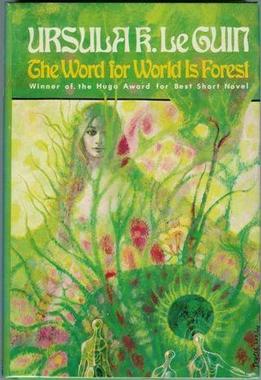
The Word for World Is Forest is a science fiction novella by American writer Ursula K. Le Guin, first published in the United States in 1972 as a part of the anthology Again, Dangerous Visions, and published as a separate book in 1976 by Berkley Books. It is part of Le Guin's Hainish Cycle.

The planet Venus has been used as a setting in fiction since before the 19th century. Its opaque cloud cover gave science fiction writers free rein to speculate on conditions at its surface—a "cosmic Rorschach test", in the words of science fiction author Stephen L. Gillett. The planet was often depicted as warmer than Earth but still habitable by humans. Depictions of Venus as a lush, verdant paradise, an oceanic planet, or fetid swampland, often inhabited by dinosaur-like beasts or other monsters, became common in early pulp science fiction, particularly between the 1930s and 1950s. Some other stories portrayed it as a desert, or invented more exotic settings. The absence of a common vision resulted in Venus not developing a coherent fictional mythology, in contrast to the image of Mars in fiction.
The Eight Worlds are the fictional setting of a series of science fiction novels and short stories by John Varley, in which the Solar System has been colonized by human refugees fleeing an alien invasion of the Earth. Earth and Jupiter are off-limits to humanity, but Earth's Moon and the other worlds and moons of the Solar System have all become heavily populated. There are also minor colonies set in the Oort cloud at the edge of the Solar System. Faster than light travel is not possible, though it is mentioned that test-flights will begin soon at the end of The Golden Globe, and the species has not as yet managed to extend itself to other stars.

Mundane science fiction (MSF) is a niche literary movement within science fiction that developed in the early 2000s, with principles codified by the "Mundane Manifesto" in 2004, signed by author Geoff Ryman and "The Clarion West 2004 Class". The movement proposes "mundane science fiction" as its own subgenre of science fiction, typically characterized by its setting on Earth or within the Solar System; a lack of interstellar travel, intergalactic travel or human contact with extraterrestrials; and a believable use of technology and science as it exists at the time the story is written or a plausible extension of existing technology. There is debate over the boundaries of MSF and over which works can be considered canonical. Rudy Rucker has noted MSF's similarities to hard science fiction and Ritch Calvin has pointed out MSF's similarities to cyberpunk. Some commentators have identified science fiction films and television series which embody the MSF ethos of near-future realism.
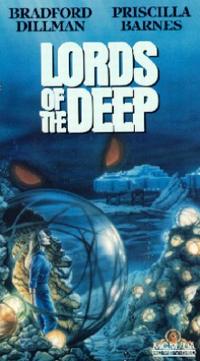
Lords of the Deep is a 1989 American science-fiction horror film co-produced by Roger Corman, about an underwater colony being attacked by alien life forms. Actors included Bradford Dillman and Priscilla Barnes.
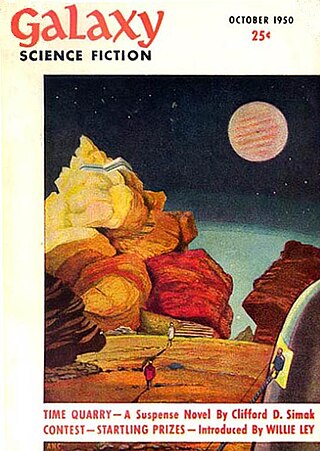
The planetary systems of stars other than the Sun and the Solar System are a staple element in many works of the science fiction genre.

The Vision is a superhero appearing in American comic books published by Marvel Comics. Created by Roy Thomas and artist John Buscema, the character first appeared in The Avengers #57. The Vision is loosely based on the Timely Comics character of the same name who was an alien from another dimension. The character is an android built by the villainous robot Ultron created by Hank Pym. Originally intended to act as Ultron's "son" and destroy the Avengers, Vision instead turned on his creator and joined the Avengers to fight for the forces of good. Since then, he has been depicted as a frequent member of the team, and, for a time, was married to his teammate, the Scarlet Witch. He also served as a member of the Defenders.
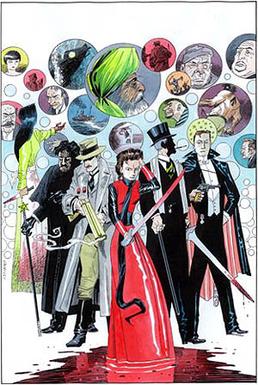
The League of Extraordinary Gentlemen, Volume III: Century is the third volume of The League of Extraordinary Gentlemen, written by Alan Moore and illustrated by Kevin O'Neill. Co-published by Top Shelf Productions and Knockabout Comics in the US and UK respectively, Century was published in three distinct 72-page squarebound comics.

Genome is a science fiction/detective novel by the popular Russian sci-fi writer Sergei Lukyanenko. The novel began a series also called Genome, consisting of Dances on the Snow and Cripples. The novel explores the problems of the widespread use of human genetic engineering, which alters not only human physiology but also psychology.

Cress is a 2014 young adult science fiction novel written by American author Marissa Meyer and published by Macmillan Publishers through their subsidiary Feiwel & Friends. It is the third novel in The Lunar Chronicles series and the sequel to Scarlet. It is followed by the fourth novel in the series, titled Winter. The story is loosely based on the fairy tale of "Rapunzel", similar to its predecessors Cinder and Scarlet which were loosely based on "Cinderella" and "Little Red Riding Hood" respectively.
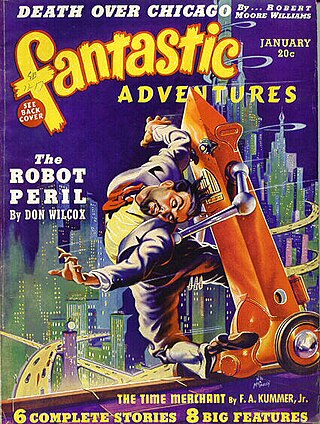
AI takeover—the idea that some kind of artificial intelligence may supplant humankind as the dominant intelligent species on the planet—is a common theme in science fiction. Famous cultural touchstones include Terminator and The Matrix.
"The Lost Art of Forehead Sweat" is the fourth episode of the eleventh season of the American science fiction television series The X-Files. The episode was written and directed by Darin Morgan.

The Murderbot Diaries is a science fiction series by American author Martha Wells, published by Tor Books. The series is about a cyborg construct designed as a Security Unit (SecUnit). The SecUnit manages to override its governor module, thus enabling it to develop independence, which it primarily uses to watch soap operas. As it spends more time with a series of caring people, it starts developing friendships and emotional connections, which it finds inconvenient.
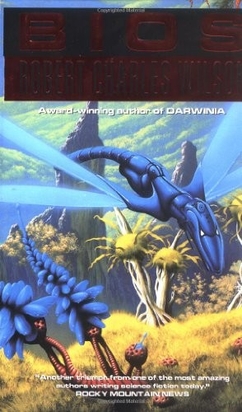
Bios is a 1999 science fiction novel by Robert Charles Wilson, a nominee for the 2000 Best Novel Aurora Award.

















